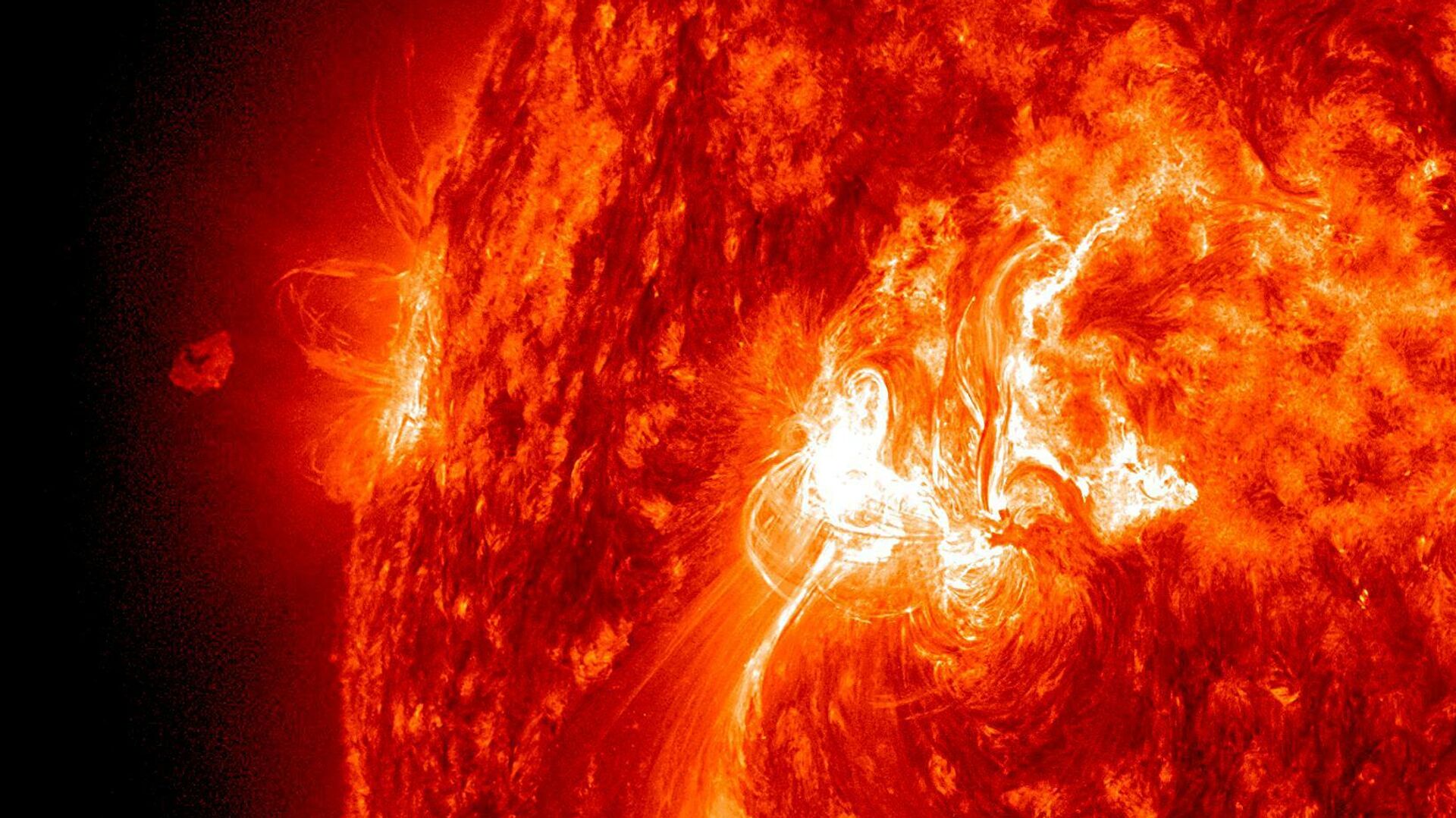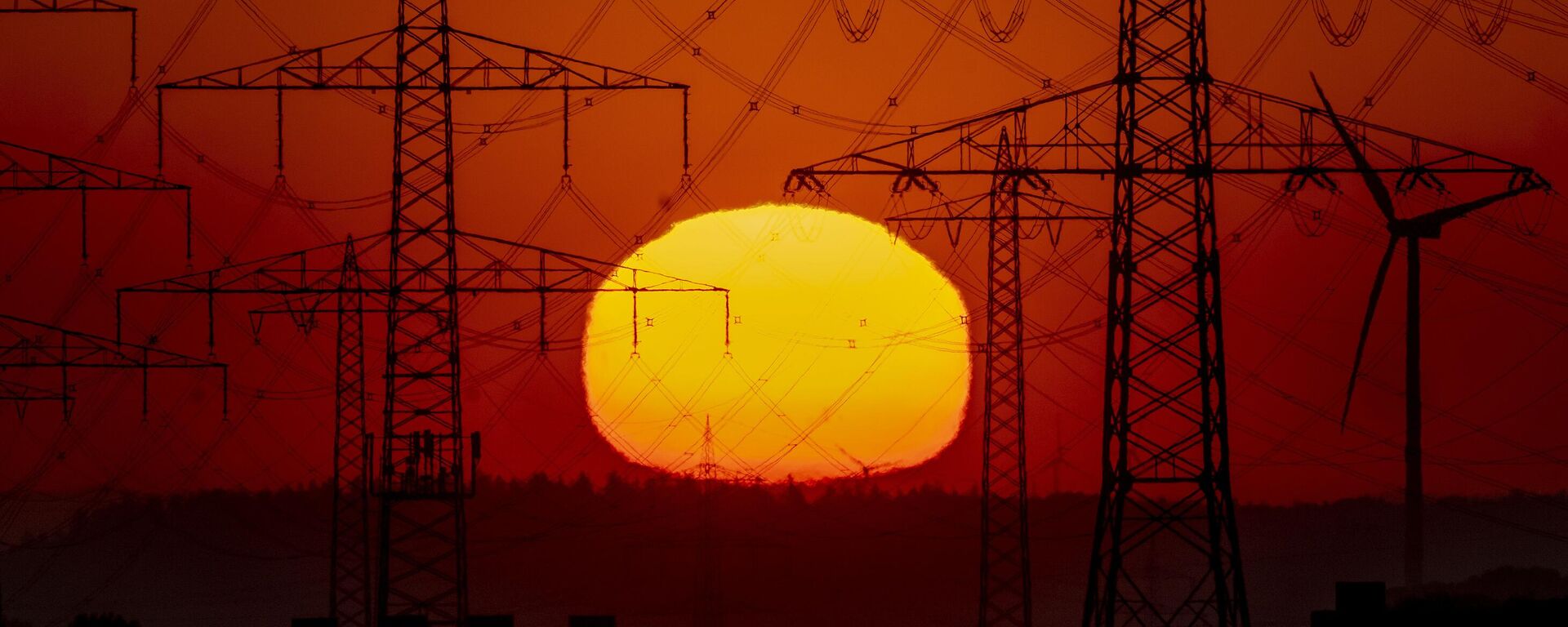https://sputnikglobe.com/20230506/coronal-holes--flares-which-solar-eruptions-will-impact-earth-as-sun-intensifies-1110132872.html
Coronal Holes & Flares: Which Solar Eruptions Will Impact Earth as Sun Intensifies?
Coronal Holes & Flares: Which Solar Eruptions Will Impact Earth as Sun Intensifies?
Sputnik International
Although the sun may appear somewhat calm from Earth, the hot ball of plasma is in fact experiencing massive bursts and explosions at increasingly irregular intervals, raising concerns among observers.
2023-05-06T03:48+0000
2023-05-06T03:48+0000
2023-06-20T17:11+0000
beyond politics
science & tech
earth
nasa
cme
sun
space
aurora borealis
space exploration
https://cdn1.img.sputnikglobe.com/img/07e6/01/1d/1092597281_0:26:1650:954_1920x0_80_0_0_be1929e6807dbd6addc19a276253d7ef.jpg
Although the sun may appear somewhat calm from Earth, the hot ball of plasma is in fact experiencing massive bursts and explosions at increasingly irregular intervals, raising concerns among observers.The eruptions are typically caused by any disruptions to the sun's magnetic fields, specifically by energy distortions that occur along planet-sized sunspots visible as dark spots on the surface of the sun. The occasional solar interferences result in solar flares, which are known for emitting electromagnetic radiation.Solar flares are classified by their strength, starting from the weakest B class through C, M and the strongest X class, which can have the energy equivalent of 1 billion hydrogen bombs.Although these solar eruptions do not pose threats to humans, solar flare events can harm satellites and have negative effects on technology such as power grids. NASA has built numerous observatories to monitor and record such flares.As the sun moves towards the peak of its 11-year cycle, experts predict it will eventually reach its maximum activity, leading to more frequent X-class solar flares.Coronal holes are another aspect of the sun that NASA has been observing, areas that appear far darker in imaging as a result of their much cooler and less dense characteristics. In fact, coronal holes mark out solar areas with unipolar magnetic fields that creates the perfect environment for free-flowing solar winds.Although coronal holes on their own are usually unable to cause an outright solar storm, they're typically given a power boost of sorts when combined with coronal mass ejections, combination that ultimately results in the phenomena known as the aurora borealis.Filaments of solar material, including sun tornadoes and a solar polar vortex, are additional areas of interest for the US space agency. Such filaments are fixed to magnetic field lines on the surface of the sun until they inevitably become unstable, and either fall back to the sun or burst out into space. Earlier this year, in March, a solar tornado was spotted twirling above the sun's surface in quite the stunning find by researchers.Scott McIntosh, a solar physicist and deputy director of the National Center for Atmospheric Research, told US media that such a solar prominence has appeared along the solar north pole in the same exact location every 11 solar-year cycle.The current solar cycle is expected to peak in 2025.
https://sputnikglobe.com/20220916/doomed-launch-dozens-of-elon-musks-spacex-satellites-annihilated-by-destruction-event-from-sun-1100861841.html
https://sputnikglobe.com/20230331/dark-side-of-sun-x-class-solar-flare-rocks-earth-and-blackouts-radio-1108982946.html
earth
Sputnik International
feedback@sputniknews.com
+74956456601
MIA „Rossiya Segodnya“
2023
News
en_EN
Sputnik International
feedback@sputniknews.com
+74956456601
MIA „Rossiya Segodnya“
Sputnik International
feedback@sputniknews.com
+74956456601
MIA „Rossiya Segodnya“
sun, cme, coronar mass explosion, sun flames, sun magnetic fields, vortex on sun, nasa observing sun, how sun affects earth
sun, cme, coronar mass explosion, sun flames, sun magnetic fields, vortex on sun, nasa observing sun, how sun affects earth
Coronal Holes & Flares: Which Solar Eruptions Will Impact Earth as Sun Intensifies?
03:48 GMT 06.05.2023 (Updated: 17:11 GMT 20.06.2023) One day, some billions of years from now, scientists say the sun will have reached its maximum size as a red giant, at which point the burning ball will be teetering on the edge of becoming a white dwarf and paving the way for Earth's likely demise.
Although the sun may appear somewhat calm from Earth, the hot ball of plasma is in fact experiencing massive bursts and explosions at increasingly irregular intervals, raising concerns among observers.
The eruptions are typically caused by any disruptions to the sun's magnetic fields, specifically by energy distortions that occur along planet-sized sunspots visible as dark spots on the surface of the sun. The occasional solar interferences result in solar flares, which are known for emitting electromagnetic radiation.
Solar flares are classified by their strength, starting from the weakest B class through C, M and the strongest X class, which can have the energy equivalent of 1 billion hydrogen bombs.
Although these solar eruptions do not pose threats to humans, solar flare events can harm satellites and have negative effects on technology such as power grids. NASA has built numerous observatories to monitor and record such flares.

16 September 2022, 18:49 GMT
As the sun moves towards the peak of its 11-year cycle, experts predict it will eventually reach its maximum activity, leading to more frequent X-class solar flares.
Coronal holes are another aspect of the sun that NASA has been observing, areas that appear far darker in imaging as a result of their much cooler and less dense characteristics. In fact, coronal holes mark out solar areas with unipolar magnetic fields that creates the perfect environment for free-flowing solar winds.
Although coronal holes on their own are usually unable to cause an outright solar storm, they're typically given a power boost of sorts when combined with
coronal mass ejections, combination that ultimately results in the phenomena known as the
aurora borealis.
Filaments of solar material, including sun tornadoes and a solar polar vortex, are additional areas of interest for the US space agency.
Such filaments are fixed to magnetic field lines on the surface of the sun until they inevitably become unstable, and either fall back to the sun or burst out into space. Earlier this year, in March, a solar tornado was spotted twirling above the sun's surface in quite the stunning find by researchers.
Scott McIntosh, a solar physicist and deputy director of the National Center for Atmospheric Research, told US media that such a solar prominence has appeared along the solar north pole in the same exact location every 11 solar-year cycle.
"Once every solar cycle, it forms at the 55 degree latitude and it starts to march up to the solar poles," said McIntosh. "It's very curious. There is a big 'why' question around it. Why does it only move toward the pole one time and then disappears and then comes back, magically, three or four years later in exactly the same region?"
The current solar cycle is expected to peak in 2025.




